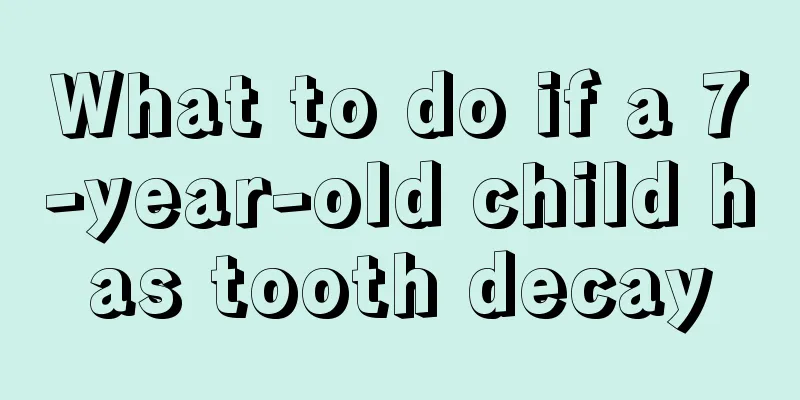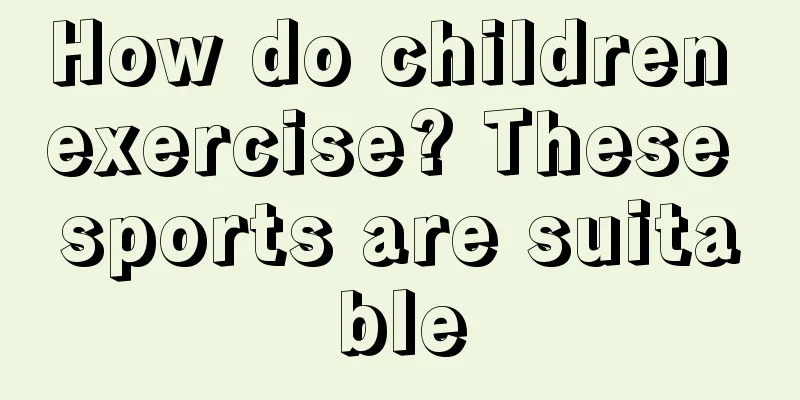What to do if a 7-year-old child has tooth decay

|
Children usually go to kindergarten when they are around 4 or 5 years old. Some parents are busy with work and may not be very careful in taking care of their children. Children often eat sweets in kindergarten, and the possibility of their teeth being damaged is very high. Many parents whose children are about to go to elementary school have reported that their 7-year-old children have tooth decay. What should they do? First, understand the cause of the child's tooth decay, and then go to the dental hospital for treatment.
1. Tooth decay, scientifically known as "dental caries", also known as "tooth decay", has a high incidence rate among young children, and children aged 3-4 are the most typical. 2. Tooth decay in young children is generally caused by poor oral hygiene. Food residues remain in the mouth and mix with bacteria to form a thin film that adheres to the mouth, forming plaque. After staying in the mouth for a long time, it will decalcify the teeth and slowly cause tooth decay. 2. The harm of baby tooth decay 1. Damage to tooth structure Dental caries can destroy the normal structure of teeth. The pain and food stuck in teeth caused by tooth decay can affect the biting of certain foods or the chewing of large pieces of food, thereby affecting nutrient absorption and even physical development. Some babies, in order to avoid discomfort on the affected teeth, often chew food with the healthy teeth. In the long run, this can lead to asymmetrical development of the jaw and chewing muscles, and even cause asymmetry of the left and right sides of the face.
If dental caries are not treated early, the cavities will become deeper and deeper, eventually affecting the development and eruption of permanent teeth, leading to developmental defects and abnormal eruption of permanent teeth, and ultimately causing misalignment and deformity. 3. Leading to psychological problems Incomplete deciduous teeth and loose upper and lower gums will affect the child's pronunciation, especially when pronouncing some sounds that require tight closure of the upper and lower gums, such as "zi", "ci", "si", etc. The pronunciation will be unclear due to air leakage, which will cause the baby's self-esteem and self-confidence to be hit, and have an adverse effect on their psychological growth. 4. Cause physical illness Severe tooth decay can cause bacteria to enter the blood circulation and even affect organs throughout the body, such as the heart and kidneys; food residues left in the mouth can also cause oral inflammation or ulcers. The more common ones include gingivostomatitis caused by herpes simplex virus and herpes pharyngitis and hand, foot and mouth disease caused by coxsackievirus, a type of enterovirus. When young children suffer from these diseases, multiple small blisters will develop on the oral mucosa, which will form ulcers after the blisters rupture.
1. Children with tooth decay must be treated as tooth decay cannot heal itself. To treat tooth decay in children, it is best to preserve the teeth. You can fill the teeth and restore their function. 2. Dental plaque can be treated with medication. If necessary, dentures will be installed after the decayed teeth are removed. |
<<: What should I do if my four-year-old child stutters?
>>: Does a child with cavities need a filling?
Recommend
Why do children get rashes? Common types of rashes in children
There are many diseases that may cause skin aller...
What are the reasons for the rumbling sound in the baby's stomach?
After the baby is born, because it has not yet fu...
Children who eat this will not be prone to allergies when they grow up
Allergies are a very common phenomenon nowadays, ...
What should I do if my child has a learning disability? Parents, please remember these methods
Every parent hopes that their child will study we...
Why does my baby drool due to eczema?
Eczema is one of the more common skin diseases in...
What to do if a one-year-old child has a fever
A one-year-old baby refers to a one-year-old baby...
What to eat when your baby is suffering from internal heat
What mothers fear most is that something goes wro...
Is it okay for children to eat raw tomatoes?
Many children like to eat tomatoes raw, and mothe...
How to detoxify the liver, gallbladder and intestines for children
Nowadays, everyone is using cars and other means ...
What are the symptoms of lung heat cough in children?
It is a very common phenomenon for children to co...
What to do if your three-year-old baby has allergies
Babies are very fragile when they are young. Beca...
What to do if your baby is bitten by mosquitoes in summer
Mosquitoes are often rampant in summer, and both ...
How old can a baby be ruled out for cerebral palsy?
If a child has cerebral palsy, he will gradually ...
What are the reasons for children's shaking hands and feet when sleeping?
Generally speaking, it is a normal physiological ...
What is the best start in life for children?
After every child is born, he or she takes his or...









